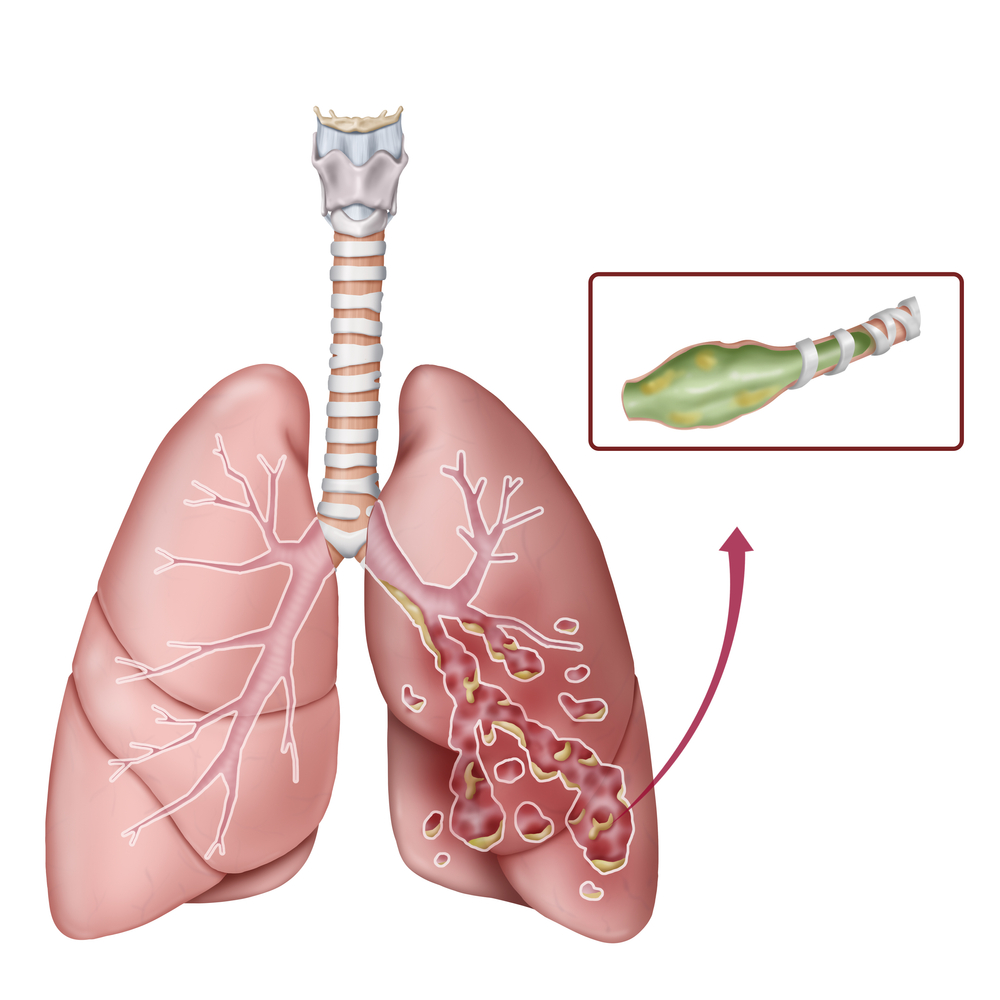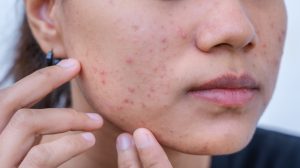Bronchiectasis is a serious condition affecting the lungs. This condition mainly affects people above 75 years old, though it is also common among the younger population with prevalence higher in women than in men. In young children, the condition is mostly seen in boys than in girls.
According to a recent study, this respiratory disease affects 566 per 100,000 people in high-income countries. In Asian countries, bronchiectasis is very common, and its prevalence is much higher when compared to other developed countries.
What Is Bronchiectasis?
Bronchiectasis is a lung condition that results in coughing up mucus. Air enters the lungs through branching airways called bronchial tubes. These tubes narrow down and attach to the edges of the lungs. When the inside surface of the bronchial tube gets thick due to inflammation, it results in bronchiectasis.
When the bronchial walls become thick, the mucus cannot pass out easily. The mucus then collects in these passages resulting in the trapping of bacteria and scarring. Besides, thin hair-like strands that help the mucus to move easily are also destroyed. As a result, breathing becomes difficult.
Sometimes, acid reflux in the lungs can also damage them, resulting in bronchiectasis.
Who Are At Risk Of Developing Bronchiectasis?
Those with any of the below conditions are at high risk of developing bronchiectasis.
- Lung infections like tuberculosis, pneumonia and whooping cough.
- Cystic fibrosis, which is a genetic condition.
- Chronic and inflammatory lung disease.
- Poor immune system caused by conditions like HIV or AIDS.
- Allergy to bronchopulmonary aspergillosis, a type of fungus.
- Deficiency of Alpha-1 antitrypsin.
- Rheumatic disease like rheumatoid arthritis.
- Aspiration of fluid or food into the lungs, known as chronic pulmonary aspiration.
- Asthma.
What Are The Symptoms Of Bronchiectasis?
- Coughing up mucus with or without blood.
- Chest pain or difficulty breathing.
- Whistling sound while breathing.
- Respiratory infections.
- Weight loss.
- Fever and chill.
- Fatigue.
In children, slow growth is also a noticeable sign of bronchiectasis.
How Is Bronchiectasis Diagnosed?
CT scan
A chest CT scan is a painless procedure that reveals the exact state of the lungs and the extent of damage caused. This helps the doctor in diagnosing the condition.
Blood test
A blood test reveals the immunoglobin level that measures the antibodies present in the body to fight the infection.
Sputum culture
A sputum culture is done to check for bacteria or fungi that cause the infection.
Lung function test
A lung function test or pulmonary test reveals how well your lungs are functioning. This test measures the capacity and volume of the lungs, as well as how well air can pass through them.
Bronchoscopy
In this method, a small camera is inserted through the mouth or nose, which goes down the trachea to the lungs. This helps to figure out and remove any blockage in the bronchia.
What Are The Treatment Options Available For Bronchiectasis?
The treatment for bronchiectasis depends on your symptoms and condition. Normally, the treatment for this condition includes
Medication
This includes:
- Antibiotics for treating infections.
- Bronchodilators to relax the muscles in the lungs and make breathing easier.
- Mucoactive drugs including expectorant to thin the mucus and help you throw it out.
- Nebuliser to open up your airway.
Vaccination
Besides medication, the doctor may prescribe flu or pneumonia vaccines to keep infections away.
Chest physical therapy
This involves a group of therapy that helps improve lung function. One method is physically pounding the chest to remove mucus and clear the bronchi. Another method is to wear an inflatable vest that makes use of airwaves to push out mucus.
In addition to the above, the doctor will also advise the patient to drink plenty of water to thin out the mucus.
In extreme cases, the doctor may recommend lung transplant surgery.
How To Prevent Bronchiectasis?
Prevention is always better than cure. The following best practices are the way to prevent bronchiectasis.
- Vaccinate children against whooping cough and measles, which can make the symptoms worse.
- Get medical attention without delay if you develop a lung infection.
- Seek medical attention immediately if you happen to breathe in any foreign object.
- Try to limit exposure to airborne substances like smoke and fumes.
- Quit smoking.
- Drink plenty of fluids consistently to prevent the mucus from becoming sticky and thick, if you develop mucus easily.
Above all this, following a healthy and balanced diet helps build your immune system and keep infections at bay.
Conclusion
Bronchiectasis is a serious condition that can cause respiratory failure, but when compared to a few years back, it has become a manageable condition. The life expectancy of people diagnosed with bronchiectasis is normal, and this is achieved through specialised treatment made available to suit the needs of each person. Thus, it is advisable to consult a doctor as soon as you develop any symptoms.












